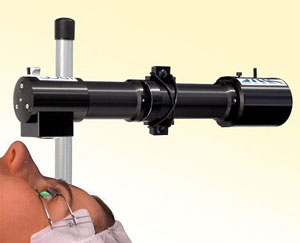April 11, 2011
Research team publishes article on corneal crosslinking

K-State researchers Yuntao Zhang, research assistant professor of biology; Abigail Conrad, professor emeritus of biology; and Gary Conrad, university distinguished professor of biology, published "Effects of Ultraviolet-A and Riboflavin on the Interaction of Collagen and Proteoglycans during Corneal Cross-linking" in The Journal of Biological Chemistry, Vol. 286, Issue 15, 13011-13022.
The cornea is the transparent, dome-shaped tissue covering the front of the eye. It is a powerful refracting surface, providing 65 to 75 percent of the eye focusing power. Keratoconus is a vision disorder of unknown molecular etiology, but with some genetic basis that occurs when the normally round cornea begins to bulge outward. This abnormal shape, arising as the central region becomes thinner, prevents the light entering the eye from being focused correctly on the retina and causes distortion of vision. Keratoconus may progress for 10-20 years and then slow in its progression. Each eye may be affected differently. Keratoconus affects one in 2,000 people.
A developing keratoconus and ectasia treatment is Corneal Collagen Crosslinking with Riboflavin (RF) (CxL), that has been proven outside of the U.S, to strengthen a weakened corneal structure. CxL is currently in US Food and Drug Administration clinical trials. The 30-minute corneal crosslinking treatment is performed in the doctor's office. During the treatment, custom-made riboflavin eye drops are applied to the cornea, which is then activated by ultraviolet light. This amazingly simple process has been shown in laboratory and clinical studies to increase the amount of collagen cross-linking in the cornea and strengthen the cornea. In published European studies, such treatments were proven safe and effective in patients.
However, the chemical mechanisms of CxL have not been elucidated. Most recently, one of our studies has demonstrated that irradiation with UVA and RF cross-links collagen into larger polymers, as well as crosslinks proteoglycans (PGs), a class of glycoproteins that are heavily linked with sugars, forming higher molecular weight polymers. Significantly, RFUVA causes crosslinking of collagen molecules among themselves and PG core proteins among themselves, together with limited linkages between collagen and PG core proteins, keratocan, lumican, mimecan and decorin.
(Image from the National Keratoconus Foundation, an outreach program of the nonprofit organization.
